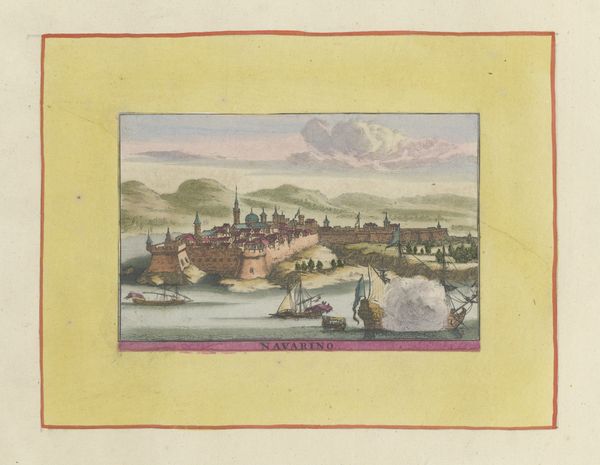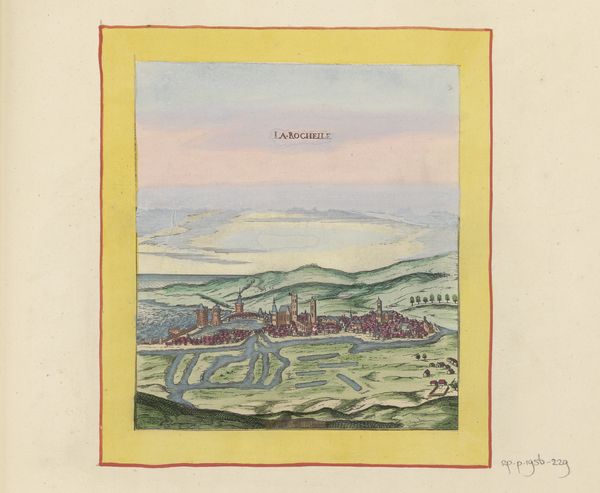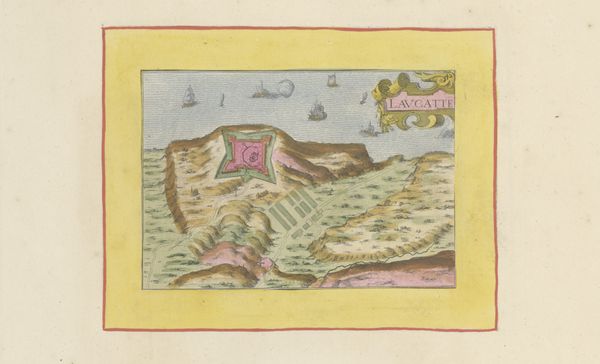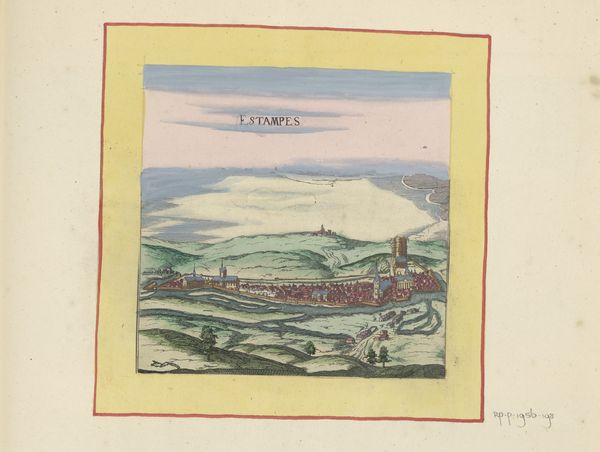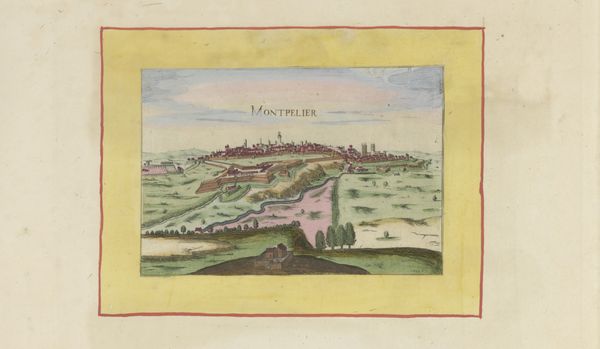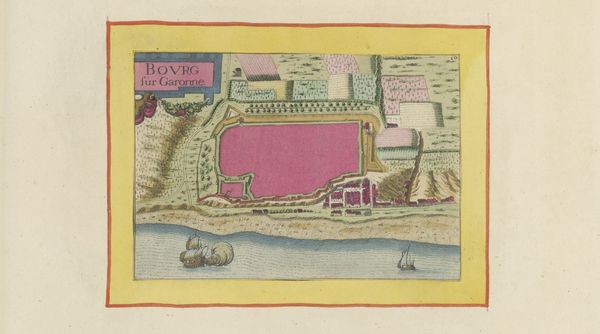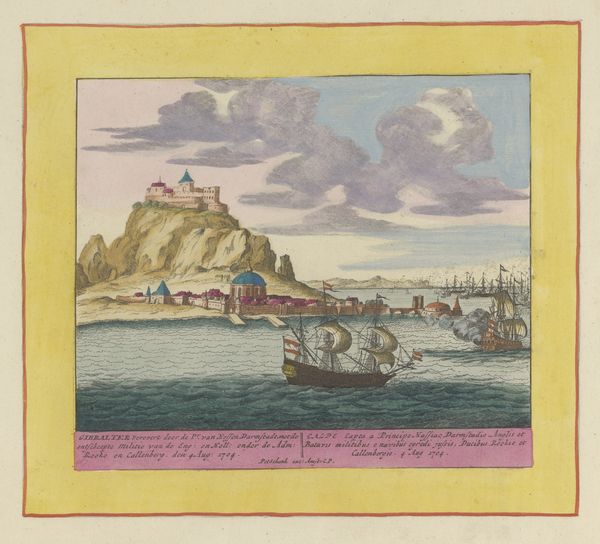
drawing, watercolor
#
drawing
#
water colours
#
dutch-golden-age
#
landscape
#
personal sketchbook
#
watercolor
#
coloured pencil
#
cityscape
Dimensions: height 103 mm, width 151 mm, height 532 mm, width 320 mm
Copyright: Rijks Museum: Open Domain
Editor: Here we have an anonymous watercolor drawing entitled "Gezicht op Saverdun," dating back to 1638. The pastel hues create a somewhat dreamy effect. What do you see in this piece? Curator: I see a convergence of military strategy, urban representation, and artistic expression. The bird's-eye perspective emphasizes the fortified walls of Saverdun, hinting at the turbulent political landscape of 17th-century Europe. It makes me think about how cities were visualizing power and defense at the time. Is this a portrait of military prowess? Editor: It’s interesting that you mention the political landscape. The soft watercolors contrast so sharply with what one might expect of a "military portrait," though. It's so gentle! Curator: The gentleness could be deceptive. It might be the artist's strategy of idealization or promotion to elicit soft power. Think about who would have been commissioning such images and what purposes they served. The city could also be portrayed in order to invite trade or new citizens. Was this work meant for public display or for private, strategic planning? Editor: I didn't consider the different intentions behind the piece, that there could be so much to unpack in this calm scene. Curator: Precisely. Considering the public role of art, and the politics of imagery, we can perceive the drawing beyond its initial aesthetic charm and dive deeper into its intended purpose. Editor: This piece really makes you question the narratives being presented to the public, or specific political bodies, back then! Curator: Absolutely, that's the beautiful and daunting role that art fulfills.
Comments
No comments
Be the first to comment and join the conversation on the ultimate creative platform.

